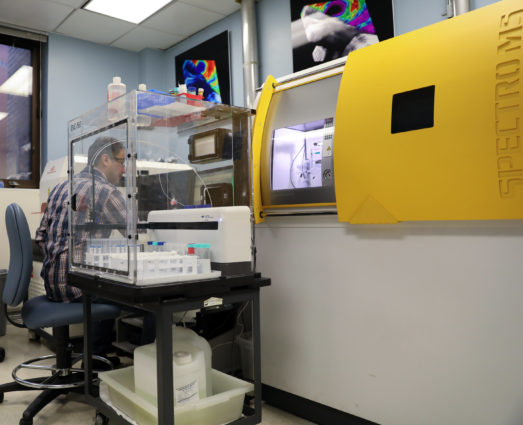A method for simultaneous measurement of 71 inorganic elements in liquids, including water, beverages, and biological fluids, offers to make element testing faster, more efficient, and more comprehensive.
The researchers studied samples of liquid from a variety of sources worldwide, including tap water from a New York City suburb, snow from Italy and Croatia, rain from Brazil and Pakistan, lake water from Switzerland and Croatia, and seawater from Japan and Brazil. Testing each sample resulted in a distinct elemental pattern, creating a unique fingerprint that can help differentiate between substances or trace a liquid back to its environmental origin.
The method was developed by researchers at the isotope laboratory of NYU College of Dentistry and described in the journal RSC Advances, published by the Royal Society of Chemistry, Quantification of 71 detected elements from Li to U for aqueous samples by simultaneous-inductively coupled plasma-mass spectrometry. It has implications for fields such as nutrition, ecology and climate science, and environmental health.
An analytical technique called inductively coupled plasma mass spectrometry (ICP-MS) is used to measure elements. Historically, ICP-MS instruments have measured elements sequentially, or one by one, but a new type of ICP-MS instrument at NYU College of Dentistry and roughly two dozen other places around the world has the potential to measure the complete range of inorganic elements all at once.
“Because of this new method, our mass spectrometer can simultaneously measure all inorganic elements from lithium to uranium. We’re able to measure the elements in far less time, at far less expense, using far less material,” said Timothy Bromage, professor of biomaterials and of basic science and craniofacial biology at NYU College of Dentistry and the study’s senior author.
Bromage and his colleagues designed a method for using simultaneous ICP-MS to detect 71 elements of the inorganic spectrum involving a specific set of calibration and internal standards. The method, for which they have a patent pending, routinely detects elements in seconds to several minutes and in samples of between 1 to 4 milliliters.
Bromage and his research team tested the method on waters, beverages, and biological samples. Snow contained the most elements of any water sample: 50 in snow collected in Italy and 42 in a sample from Croatia.
“Such evaluations of snow may represent a new and comprehensive means of surveying atmospheric concentrations of elements and for monitoring element patterns in global airflows,” Bromage said.
The elemental content of water, for example, typically reflects its natural environment. So, understanding the elemental composition can identify its origins from a source with volcanic rock versus limestone, an alkaline rock. In bottled water, the researchers observed variations that can likely be traced to one being bottled at the source and one being chlorinated for transportation from the source to the bottling plant.
“Water is an arbiter of how a system actually works. If you sample the water from a pond or river and measure the elements, you are measuring the stuff that becomes incorporated into all life—water feeds the plants, animals eat the plants, we eat the plants and animals,” said Bromage. “We could use this knowledge to study human fossils and potentially retrodict what the nature of the region’s water was hundreds of thousands or millions of years ago.”









